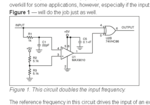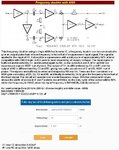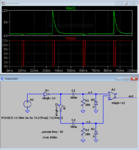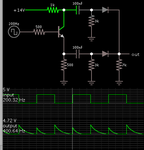teliocide
Newbie level 4
I need to increase the frequency of a square wave signal by a factor of 2.
The source signal is in the range 20 to 200 Hz so the output will be 40-400Hz.
The source signal duty is less than 50%.
The available supply voltage is 14VDC
At this point in time I am unsure what the minimum acceptable duty on the output is.
I think the device receiving the doubled signal only requires a trigger signal.
I have a vague memory of people using logic gates for this.
All assistance greatly appreciated.
The source signal is in the range 20 to 200 Hz so the output will be 40-400Hz.
The source signal duty is less than 50%.
The available supply voltage is 14VDC
At this point in time I am unsure what the minimum acceptable duty on the output is.
I think the device receiving the doubled signal only requires a trigger signal.
I have a vague memory of people using logic gates for this.
All assistance greatly appreciated.




